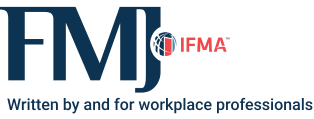Ask the Experts
Do you have a strategy & plan, & is that enough?

While having a plan is essential, this mandate requires a framework that encapsulates the key process, strategy and governance components. From the core guiding principles that are defined to the final goals and action plans that ensure the alignment of strategic initiatives with demand organization objectives, it takes a lot of collaboration and communication for a strategic plan to bring successful outcomes today and tomorrow.
When FM takes part in strategic planning, changes in the work-place and expanded roles often arise, especially in the area of sustainability. Sustainability objectives, because they are relatively recent as strategic considerations and evolving quickly, benefit from a planning and service delivery approach that consistently embraces the Asset and Facilities Management standards of ISO (41000 and 55000 series) and best aligned practices. The integration of technology is a further key element to incorporate in the master plan, so that an imperative in every strategic initiative is diligence to ensure the solution best aligns with the business case and with the culture and mission of the demand organization.
A predominant characteristic to embed throughout strategic planning is flexibility. Changes are inevitable.
The role of technology
Not all technology moves at the same speed. Equipment, regardless of its type, has a unique life expectancy determined by various factors. This includes wear and tear, availability of parts, hardware and software innovations, supplier closures and buyouts, market needs or general technology evolution. The risk of equipment becoming obsolete over time is always a reality and is important to assess early and regularly. As technology improves, it offers the opportunity to upgrade for better performance and ease of diagnostics and maintenance, but the potential for technology failure or obsolescence must also be strategically considered.
The automobile industry provides one example of how changing technology drives the need for facility upgrade and equipment replacement plans. The electrification revolution is driving vast investments in new equipment, including charging systems, battery cyclers and battery emulators that will require a new set of maintenance requirements to remain operational and efficient. Adjustments to the existing tools and in some cases a new infrastructure are required to keep facility operators up to date with the most recent tech offerings. To facilitate the process, it is necessary to develop a mechanism to stay informed about the latest market trends and how the available technology and equipment can impact the facility operation. In the absence of reliable internal resources, consulting relatable reference material and establishing reliable connections within the industry including supply chain professionals and consultants is a productive way to gather appropriate in-sights and benchmarking.
Balancing, data, analytics & intuition
When expensive, work-intensive decisions need to be made, most professionals want to see the numbers first. For facilities of any size, leaders and their engineers are accustomed to digging through historical data and market insights to ensure the right equipment, technology and processes are in place to deliver on efficiency, safety and productivity. Hard data helps FMs make informed decisions on any-thing from a building’s energy consumption to heavy equipment servicing sched-ules to product development timelines.
Data alone, however, is not enough. Even with heaps of internal data, access to industry insights and the right analytics tools to extract and organize the information, businesses will not achieve results without strategic planning that is both experience-driven and open-minded. This comes down to intuition. Often times, even the most experienced leaders are uncomfortable when they are told to rely on instinct. When a judgment comes down to a gut feeling that cannot be concretely defined or backed by hard data, it begs the question, “how do you really know?” In-tuition might be hard to measure, but it is scientifically proven that one’s gut feeling is actually the human body’s natural response to stimuli generated by the unconscious mind sifting through its past experiences and cumulative knowledge. By tapping into both intuition and hard data, alongside the advice of entrusted people who are on the “frontlines” of the job, facility teams and management can come together to strike a balance between the art and science of equipment upgrades.
When equipment no longer meets its requirements or is at the end of its life cycle, recognition of needs is the first step. This step is easier said than done, especially when facility equipment central to operations feels like an immovable mainstay. Whether recognized by executives or engineers on the ground, intuition drives the desire to implement change in the first place. On the other hand, making the case for equipment changes requires data-driven backing to get off the ground. Whether a physical plant upgrade, new software integration, or regulatory improvement, it is necessary to determine if the needs can be met with an optimal solution or in an alternative, more cost-effective, but perhaps less efficient way.
Some things can be easily quantified and justified. A blown fuse is one example. A decision to address this problem does not demand strategic alignment. On the other hand, the implications are large for replacement or upgrade of mission-critical facility equipment that carries the burden of obsolescence. There is also the reality that outdated equipment or failed integration can compromise the business’ bottom line. This calls for that balance of art and science: someone must be in place who understands the fundamentals of the equipment’s operations, but who also provides an objective, insightful perspective that can illuminate new opportunities for efficiency or function. Ultimately, decision making should come down to being proactive versus reactive while combining real-world experience and intuition with hard data.

References
What’s your Facility’s Value Proposition, Barry Lynch, CFM, SFP, MBA, NCARB, IFMA Fellow (2013), IFMA White Paper: Strategic Facility Planning (2009), and IFMA FMJ, Ask the Experts: Strategic Facility Planning (2016)
41000 series introduction enatun.com/iso-41000-series-fm-standards-thegenesis-of-a-new-era-video/
ISO 55000 series introductions iso.org/news/2013/12/Ref1805.html
HBR-In a volatile world your strategy must be flexible (2022)
Read more on Risk Management and Leadership & Strategy or related topics Facility Resilience and Strategy
Explore All FMJ Topics









